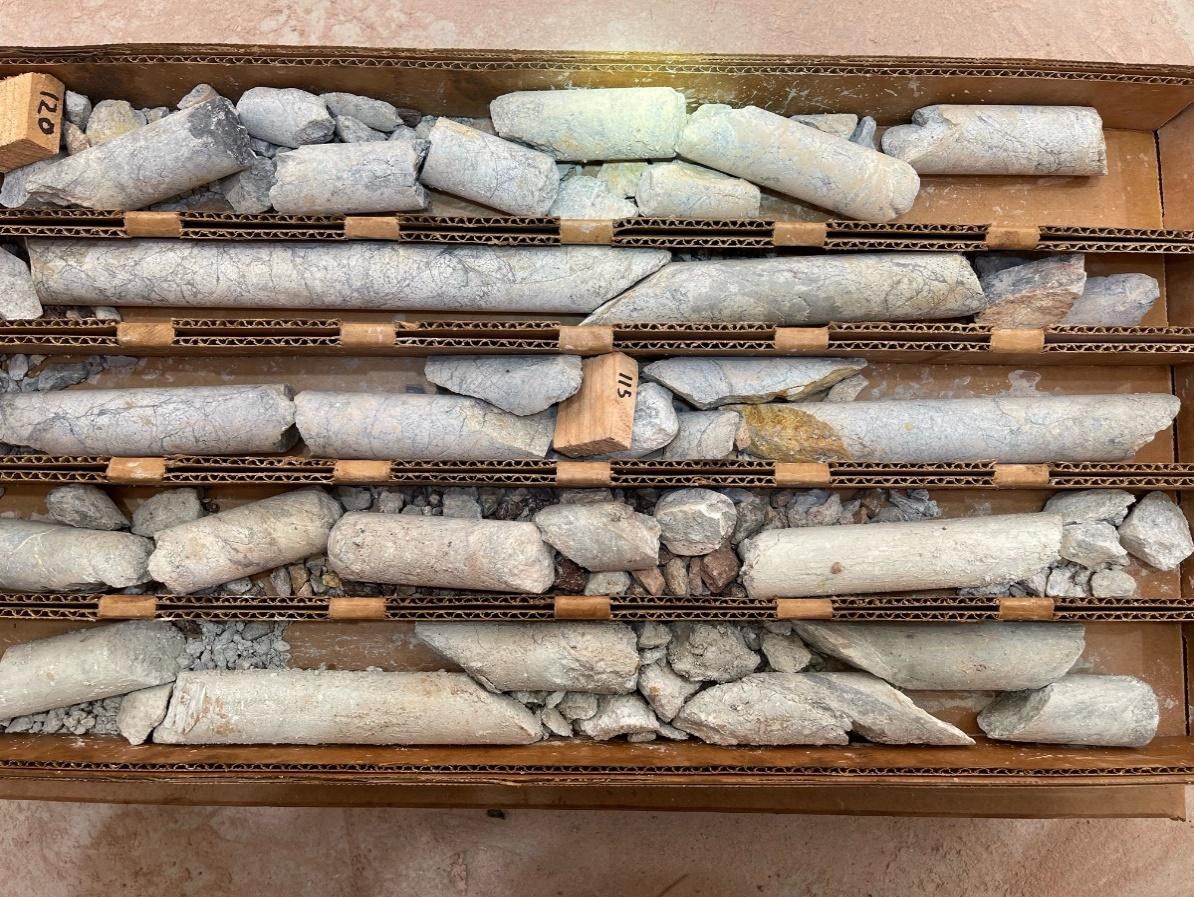Can any geologists explain why the cores are white?I may be talking complete nonsense at one or more or all points in this post, am simply looking to share thoughts and get insight from other people as always. The new cores from today are coloured white on the outside. (And as the NR says, with "intense pervasive dark veining of silver-copper-antimony minerals within high-grade silver zone.")

The older cores from March look very different:

Bayhorse is an extremely unusual kind of deposit comprised of two different kinds of rock, very genetically distinct, andesite and rhyolite. A friend of mine has pointed out to me while they are both "extrusive" rocks (i.e. formed by magma that erupted onto the surface, and which quickly cooled), the andesite is classified as "felsic," with high levels of quartz and feldspar, while the andesite is classed as "mafic," which is more iron- and magnesium-rich.
They make contact with each another by means of a thrust fault called the Sunshine Fault. The mineralization is extremely strong where they make contact. "Mineralization is hosted by, and strongly controlled in the Sunshine Thrust." (Technical Report p. 36.) The andesite is the older kind of rock, but what makes Bayhorse even more strange is that the Fault (as my friend has also pointed out) is a "reverse fault" so that the older andesite is on top and the younger rhyolite on bottom. You can see this in the following picture from the Technical Report:

Something that I notice is that where they make contact, you can see a very white streak in the above picture. Am I imagining that in the new picture of the ore-body just released in the NR today, you can also see andesite and rhyolite making contact just like the above picture? And that you can see the same very white streak? Are they perhaps taking the cores from this extremely mineralized region then?

The Technical Report also says on p.38: "Conway indicates that the highest-grade material lies within the Sunshine structure and perhaps within rhyolite fault slices in the 20 to 40 ft thick fault zone." And I see an interesting picture in p. 44 of Technical Report where you have "Part of the Sunshine Thrust Fault as seen on surface with a slice of Huntington tuffs (purple) between two faulted units of rhyolite (white)."
